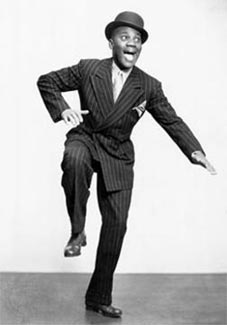Product Description
Carl van Vechten “Bojangles” 1935


CARL VAN VECHTEN (1880-1964) USA
Bojangles 1935
Signed: Bill Robison, XXV . b . 25 (in ink on back); PHOTOGRAPH BY CARL VAN VECHTEN, 101 CENTRAL PARK WEST, CANNOT BE REPRODUCED WITHOUT PERMISSION (ink stamp on back)
Size: H: 9 15/16” x W: 6 3/8”
Bill “Bojangles” Robinson (1878-1949) was a pioneer and pre-eminent African-American tap dance performer.
Carl van Vechten “Bojangles” 1935
CARL VAN VECHTEN (1880-1964) USA
Billie Holiday 1949
Signed: Billie Holiday, March 23. 1949, III g9.11(in ink on back); PHOTOGRAPH BY CARL VAN VECHTEN, 101 CENTRAL PARK WEST, CANNOT BE REPRODUCED WITHOUT PERMISSION (ink stamp on back)
Size: H: 9 3/8” x W: 6 11/16”
Billie Holiday (1915-1959) was an American jazz singer and songwriter. Nicknamed Lady Day by her sometime collaborator Lester Young, Holiday was a seminal influence on jazz, and pop singers’ critic John Bush wrote that she “changed the art of American pop vocals forever.” Her vocal style — strongly inspired by instrumentalists — pioneered a new way of manipulating wording and tempo, and also popularized a more personal and intimate approach to singing.
CARL VAN VECHTEN (1880-1964) USA
Truman Capote 1948
Signed: TRUMAN CAPOTE, IV ee.18, March 30. 1948 (in ink on back); PHOTOGRAPH BY CARL VAN VECHTEN, 101 CENTRAL PARK WEST, CANNOT BE REPRODUCED WITHOUT PERMISSION (ink stamp on back)
Size: H: 9 7/8” x W: 6 3/8”
Carl Van Vechten (June 17, 1880 – December 21, 1964) was an American writer and photographer who was a patron of the Harlem Renaissance and the literary executor of Gertrude Stein. Van Vechten took photographs of many the major artists and intellectuals of the first half of the 20th century. The importance of these images is twofold; they document a specific time and milieu in 20th-century American history that was neglected by others, and they are among some of the earliest art photography images created.
